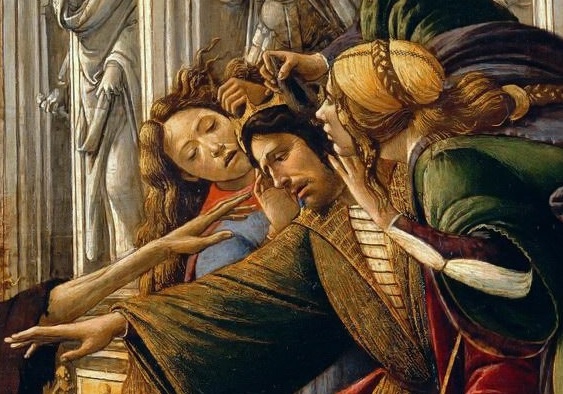5 Facts about the Counter-Reformation in Art You Need to Know
The Counter-Reformation was the Catholic Church’s response to the Protestant Reformation spreading through Europe during the Renaissance.
Anna Ingram 5 December 2024
Botticelli’s final painting with a mythological subject is based on a lost painting by an ancient Greek painter Apelles. He ventured to paintwork according to a description provided by Lucian in his Dialogues. Although Botticelli was neither the first nor the last artist to depict the theme, his work is stunning with detail, allegory, and precision, yet sadly not very well known.

The painting is really tiny (compared to the majority of his works), 24.41 x 35.83 inches, and his detailed technique rather brings to mind miniatures than images on wood. Look at the miniature mythological and religious scenes on the architectural reliefs in the background – they are so sharp and clear, so thoroughly thought out.

The small size and the technique suggest that the painting was not intended for display but was meant to be hidden and treasured, enjoyed solely on a special occasion.

We’re not sure whether the painting was commissioned or not, it might have been painted by Botticelli to express his resentment for an unjust accusation of a crime he had not committed (an anonymous denunciation to the authorities accused him of sodomy) since the painting is an allegory for a real story of an unjust accusation that happened to the painter Apelles. He had been accused by a rival painter Antiphilos of having allegedly participated in a plot against the king of Egypt. Anger and shame experienced by Apellus summoned to the king are embodied by a young man in a loincloth.

He is being dragged in front of the king’s throne by Calumny. She is holding a torch which may suggest that the spread of lies is as quick as the spread of light. Her hair is arranged with white ribbons by Fraud, while Perfidy decorates her head with roses, both being symbols of purity and innocence here subverted. Can he expect a just judgment? It doesn’t seem so as the king is gullibly listening to two beautiful figures personifying Ignorance and Suspicion. They’re whispering calumnies to his “donkey ears” of King Midas. He’s extending his arm toward a man in a black cloak who represents Rancour (Envy) and obscures the king’s view of the scene below.

A young woman on the left is, of course, naked Truth. She’s full of indignation and she points towards Heavens expecting the last judgment to come from God. Her beautiful figure is juxtaposed with an old woman in black mourning who stands for Punishment and looks at Truth with scorn (or is it envy?). That is the meaning implied by Botticelli’s final painting.

DailyArt Magazine needs your support. Every contribution, however big or small, is very valuable for our future. Thanks to it, we will be able to sustain and grow the Magazine. Thank you for your help!